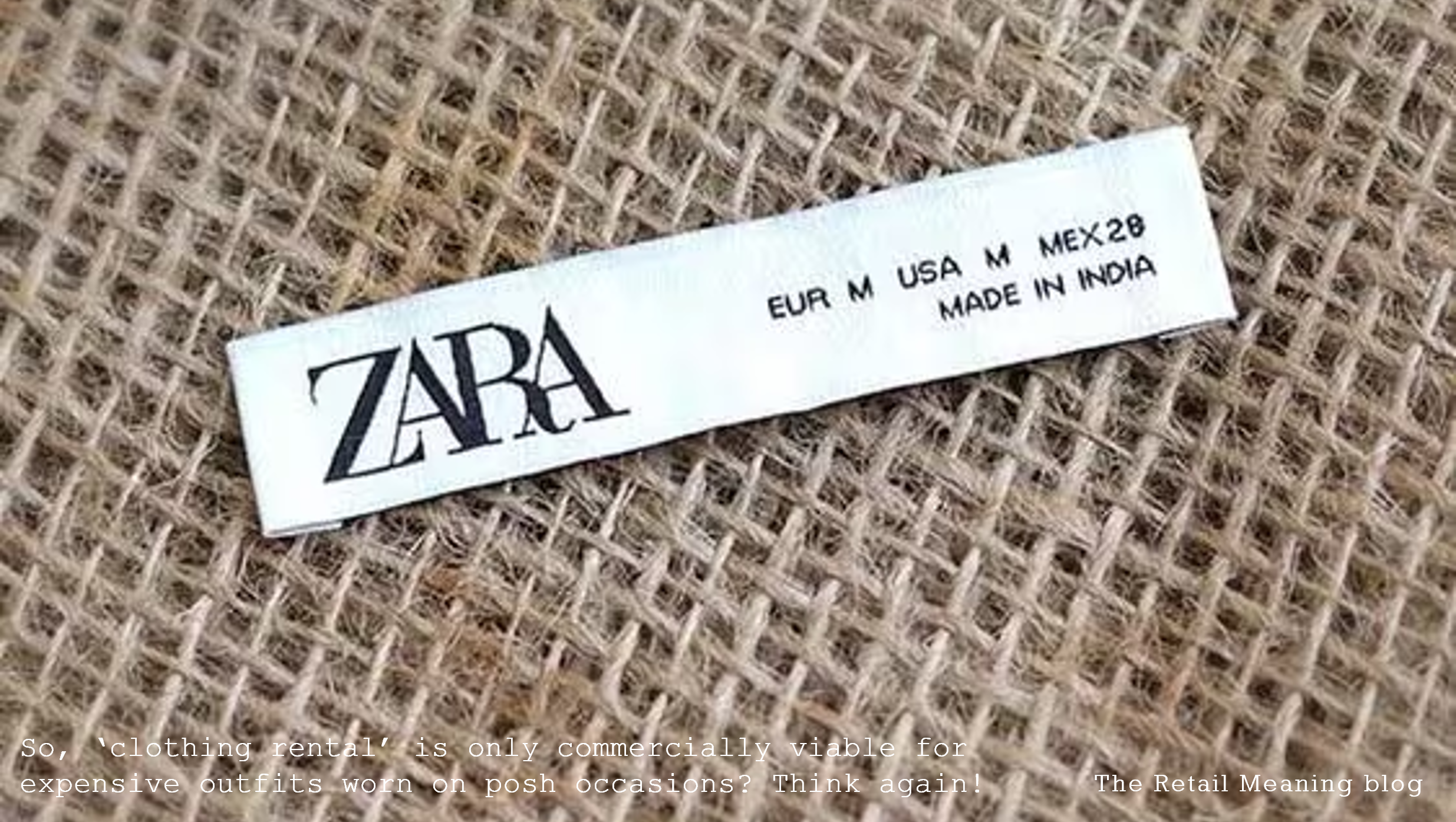So, ‘clothing rental’ is only commercially viable for expensive outfits worn at posh occasions? Think again!
To make clothing rental work it must be a commercial success for both the retailer and the customer. If either party loses out, then the business model will simply not work.
With that in mind, perhaps you’ve been under the same delusion as I have, in thinking that the only way that clothing rental can be economically viable, is for expensive outfits, only required for individual special occasions, weddings, balls, social events etc. For the customer it makes sense to pay less to rent than to buy expensive items you’ll only use a few times at best. For the retailer, the high price garments can fetch a high rental fee, which is required to cover delivery and its wider operational expenses.
And so, in the wider war to make fashion sustainable, renting is absolutely another weapon in the armoury, but it is a more niche proposition only appropriate for a narrow range of customers and retailers.
Well, thanks to specialist rental businesses such as Hirestreet (great name by the way) it seems that we should think again. Because, the economics of renting apparently work for fast fashion brands, and for the likes of you and me, as ‘ordinary’ customers.
Hirestreet host more than 90 brands including high street fast-fashion favourites like Zara. And ironically perhaps, a brand like Zara, with is hyper-dynamic churn, can be ideal for rental
So how does that work?
The first important element is the price/quality ratio. A product must be durable enough to withstand at least 10 cycles of rapid renting. So, the most basic products will still simply not cut it as rental possibilities.
Secondly, the product must be a seasonal imagemaker or bestseller. Part of the ‘look’ of a season. Here the product is desirable when its ‘hot,’ but equally because it is ‘hot’ the customer doesn’t want to wear it more than once or twice. It is the same attraction and motive for luxury product renters, but it is subtly more related to ‘fashion of the moment’ than ‘product of the moment’
In terms of customer economics, image makers and best sellers again fit the bill. In any fast fashion range, the garments will be in the mid-to-upper part of the price architecture. For fashion conscious customer it then makes sense to hire out 4 dresses at £20 each, for example, than to buy those 4 dresses at £80-100 each. This model also satisfies the modern customer’s desire for change and lifestyle dynamics, over possessions. For them it is good value. Just as it is in their house, car, music, and entertainment rental decisions.
For the retailer there is also economic sense in this market. You can sell 1 dress for £80, or you can rent it 10 times in a season for £20 a time, again for example. Put like that you can see the gain. The danger for fast-fashion retailers is that they become the victim of their own rental success, with the cannibalised sale of items becoming so low against rented items, that the income from renting can simply not make up the shortfall required for their volume margin operating model. So, it is a matter of balancing any product between ‘for sale’ and ‘for rent.’ With a % of ordered products, maybe 10% initially, allocated only for rental.
In all likelihood, the balance will be defined by the customers’ choices, and that this balance will settle to a ratio that works well for the customer’s lifestyle and sustainable ambitions, and also the brands operating model.
For everyone, the sustainable impact is a ‘no-brainer.’ With most of the damage caused by fast-fashion related to the product production and supply-chain, then the difference from the impact of 1 product rented locally 10 times in a season as opposed to 10 products produced half-way round the planet is massive.
And the final opportunity both economically and sustainably is the increased interest in bundling groups of products by occasion. Whilst luxury rental may focus on specific social events, fast-fashion rental is more likely to be built around extended lifestyle events such as festivals, summer holidays or Christmas celebrations. Economically, the reduced individual item rental for more things works for customers, and the renting out of more options at a higher total rental fee is good for retailers, all set against less operational and logistical expenses for all.
The rental market has grown exponentially over the past few years – it is set to grow 10% year on year for the next five years and be worth more than £7.5bn by 2026.
Maybe its growth is not surprising, in a world where more people, particularly younger customers, are more at home with renting than possessing, and whose sustainable concerns are greater and more focused.
But be prepared to be surprised by the retailers that become evermore involved, creating products for sale, products for rent, and the blurring hybrid situation which may well become the norm for most garments.
Ultimately, what we call rented, and what we call bought, will be irrelevant. The one certainty is that it will be profoundly better for the planet, the environment, and for all of us who inhabit this world, whatever price point we traditionally buy our clothes at.
